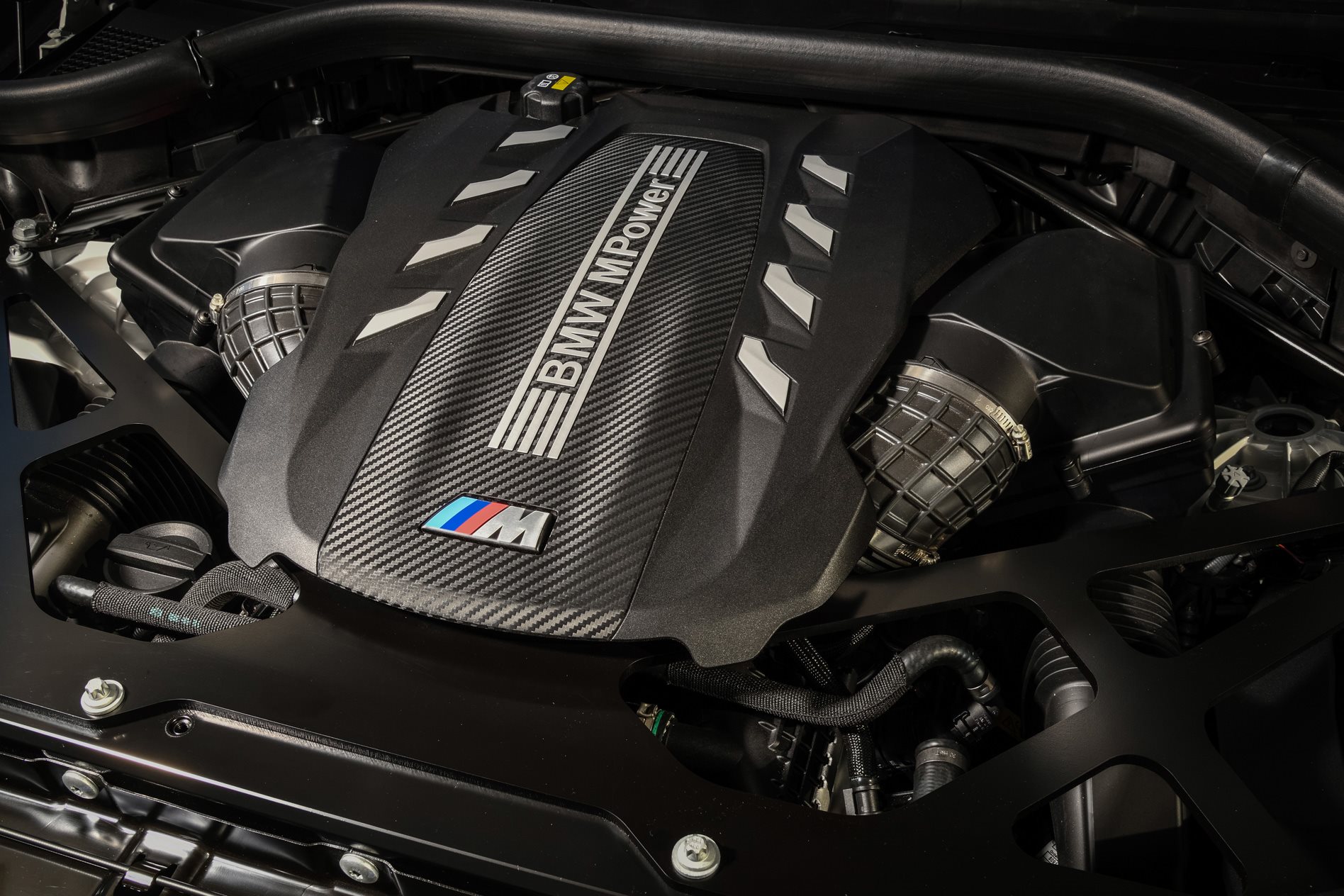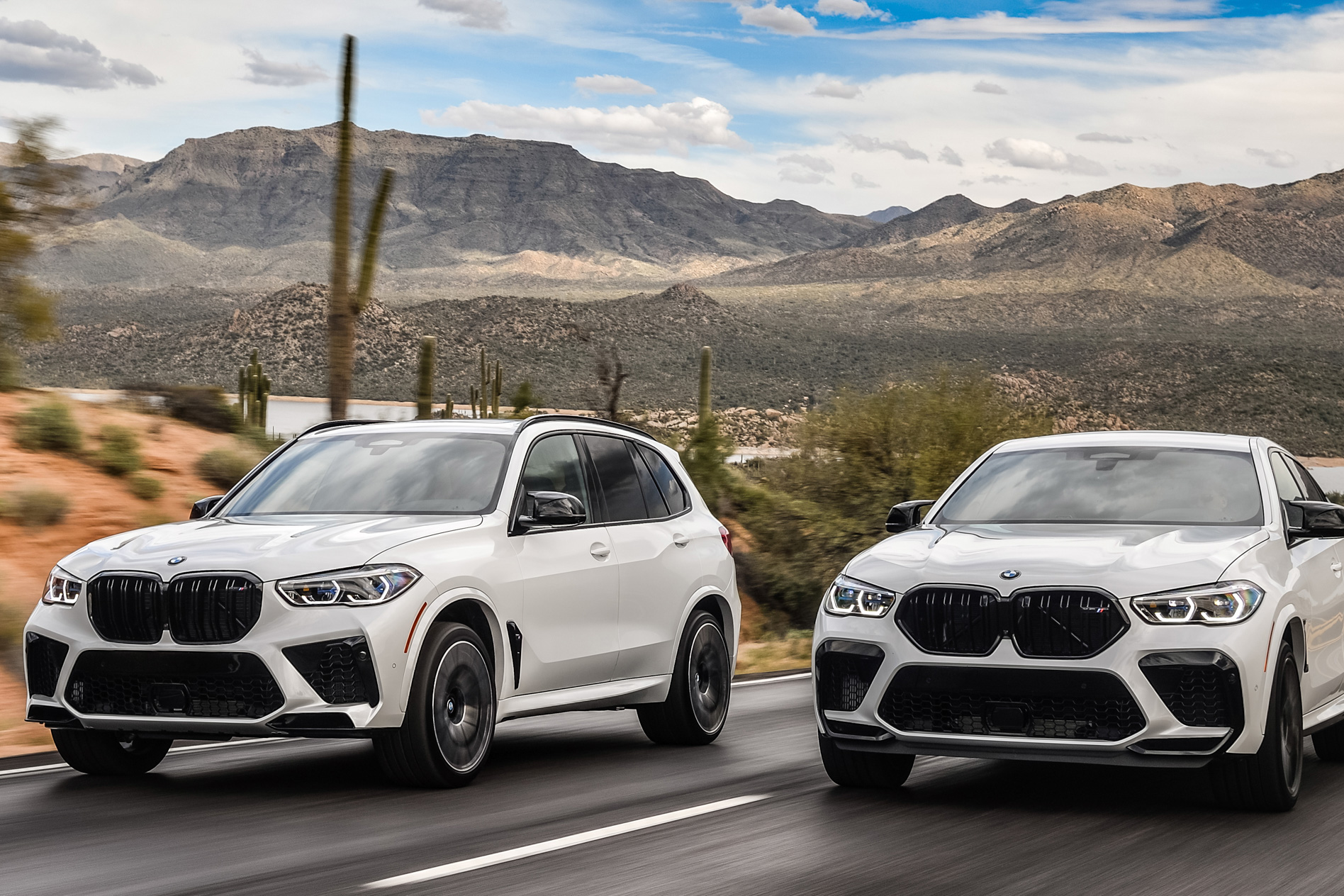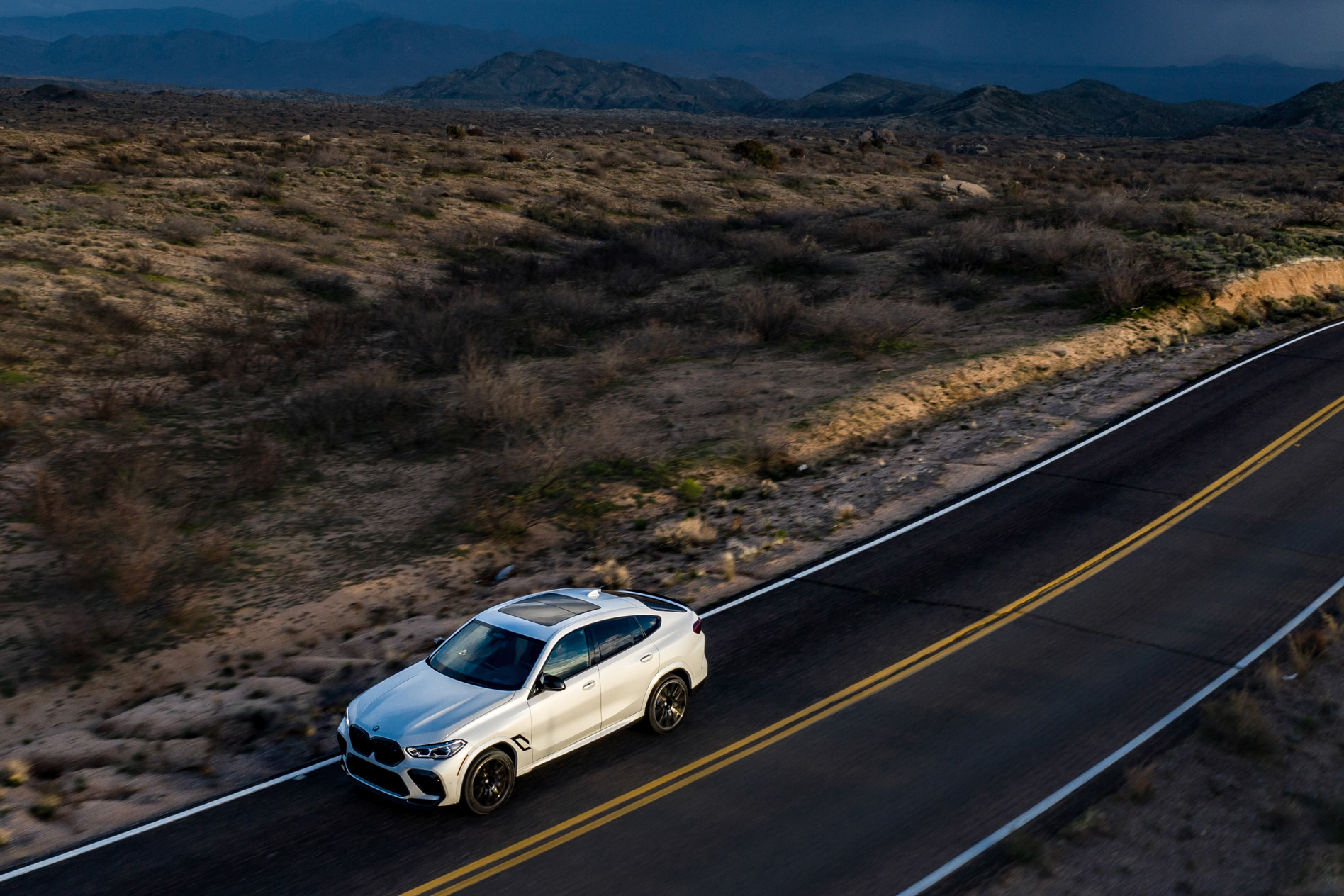
BMW’s new super-SUV fraternal twins, the X5M and X6M, share the same mighty twin-turbo V8 engine, and if BMW has its way, the eight-cylinder layout will continue – though not without its issues.
The S63 engine aboard the SUVs is a straight lift from the BMW M5 sedan and BMW M8 coupe, and the twin-turbo ‘hot vee’ engine is good for 460kW and 750Nm in Competition spec.
Built around a 90-degree vee angle and a sleeveless closed-deck crankcase, the 4.4-litre motor is a very sophisticated motor, with Valvetronic variable valve lift – the first time the system has been used in a BMW V8 application – and direct fuel injection, as well as a pair of high-flow twin-scroll turbochargers.

The engine revs to a generous 7200rpm, with gas and noise escaping via a sophisticated exhaust system.
However, despite this technology, the head of powertrain project management for the X5M and X6M, Axel Theiling, says that various emissions regulations are making life challenging for engineers who work on the V8 family.
“The V8 is not developed especially for this vehicle,” he told WhichCar. “We developed it for the M5 and M8 and brought it over to this vehicle. There are some small changes, like the exhaust system for example. The M5 and M8 prove that there is no need to change things.”
Giving each M product a unique sound is an important aspect, he said. “We have sound designers who think about what a car should sound like. In principle, it’s a similar exhaust – it’s a two-bank system with large cross-sections and you can design the sound with the middle silencer and the rear silencer.”
Theiling admitted there is a degree of amplified noise in the system, but it’s used mainly to mask sound elements that are produced as a result of noise emission regulation compliance.
“Mainly it’s mechanical sound but we have to add some electronic sound too, for example, to eliminate some characteristics which we get with emissions requirements and want to eliminate because it doesn’t fit, in our opinion, to a V8,” he said.

“Drive-by noise [regulation compliance] is “absolutely” an issue. In Europe, it’s very tough. After the ‘diesel discussions’ started, they started to look also on acoustic emissions, and it’s very tough for us to meet the requirements of our customers and meet all the regulations. We try to be as close to the allowed limits of the regulations.”
He agrees that tightening regulations will have a bearing on what powertrains are used for particular cars, but sees no impediment to the use of the V8, at least in the short term.
“I think it depends on the market,” Theiling said. “You can’t say in the future that there will be no market for V8, but we have to have a close look at what’s going on, and then we have to decide what’s the best fit for the vehicle.
“It’s very difficult. But we still meet every regulation requirement, no discussion.”
Theiling believes, though, that it’s the relatively small size of the BMW M group that gives them the best chance of tackling tightening regulations and still being able to produce cars like the thundering X5M and X6M.
“What BMW M is very good at is working together over all disciplines,” he said. “We are not fighting for who gets the best cooling or the best aerodynamics. We sit together and come up with the complete best concept.
“Maybe we have to come up with the second-best cooling concept to get better aerodynamics for example, and then the complete concept fits. This is special for BMW M. We are like a family.”



